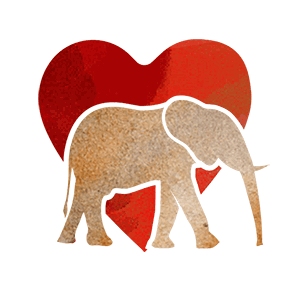As the day progressed she came into contact with a small wild group, consisting or three adult cows and their own calves, but while they were curious about the newcomer they did not seem interested in embracing her in their family unit and she remained peripheral, but close enough to the group to make another rescue attempt on that day impossible.
![]()
Early on the 18th our team and Veterinary Unit continued to search the Voi river circuit for her whereabouts. They came across a number of elephant herds but the calf was nowhere to be seen. Our orphans and their Keepers in the meantime had climbed high up the slopes of Masinga hill to feed, and it was from that vantage point, at about 3.30pm in the afternoon, that our Keepers spotted the small calf three kilometers away on the plains below, now completely alone. They immediately alerted the Mobile Veterinary Unit of the calfs whereabouts and decided to lead our orphans group, who had been joined this day by Natumi and Edie to the abandoned calf. The orphans immediately surrounded her, gave her reassurance and comfort, and it was not long before she was totally integrated into the midst of the orphan herd. It was soon time for them to begin their long walk back to their night stockades and Msinga, named after the hill from whose vantage point she was spotted, followed closely. She followed them all the way back to the stockades, a distance of over 8 kilometers. However once there, despite much coaxing from the older orphans, she was not confident enough to follow them into their night stockades.
![]()
![]()
Dr. Ndeereh then tranquilized the calf in order for her to be manhandled into the safety of the stockades for the night. Despite the strange surroundings she settled in fast with the others close for comfort.
In the following days she remained in the confines of the stockades with the reassuring presence of a different orphan each day staying back with her for comfort until she tamed down and became comfortable with the Keepers presence. Having settled down, amidst great excitement, she was able to join the other orphans on their daily outing in the bush and seemed truly happy to have a family unit to call her own again. The other orphans singled her out for preferential treatment as little Msinga, the youngest member of the Voi Unit in those days, who was very precious to them all.

























